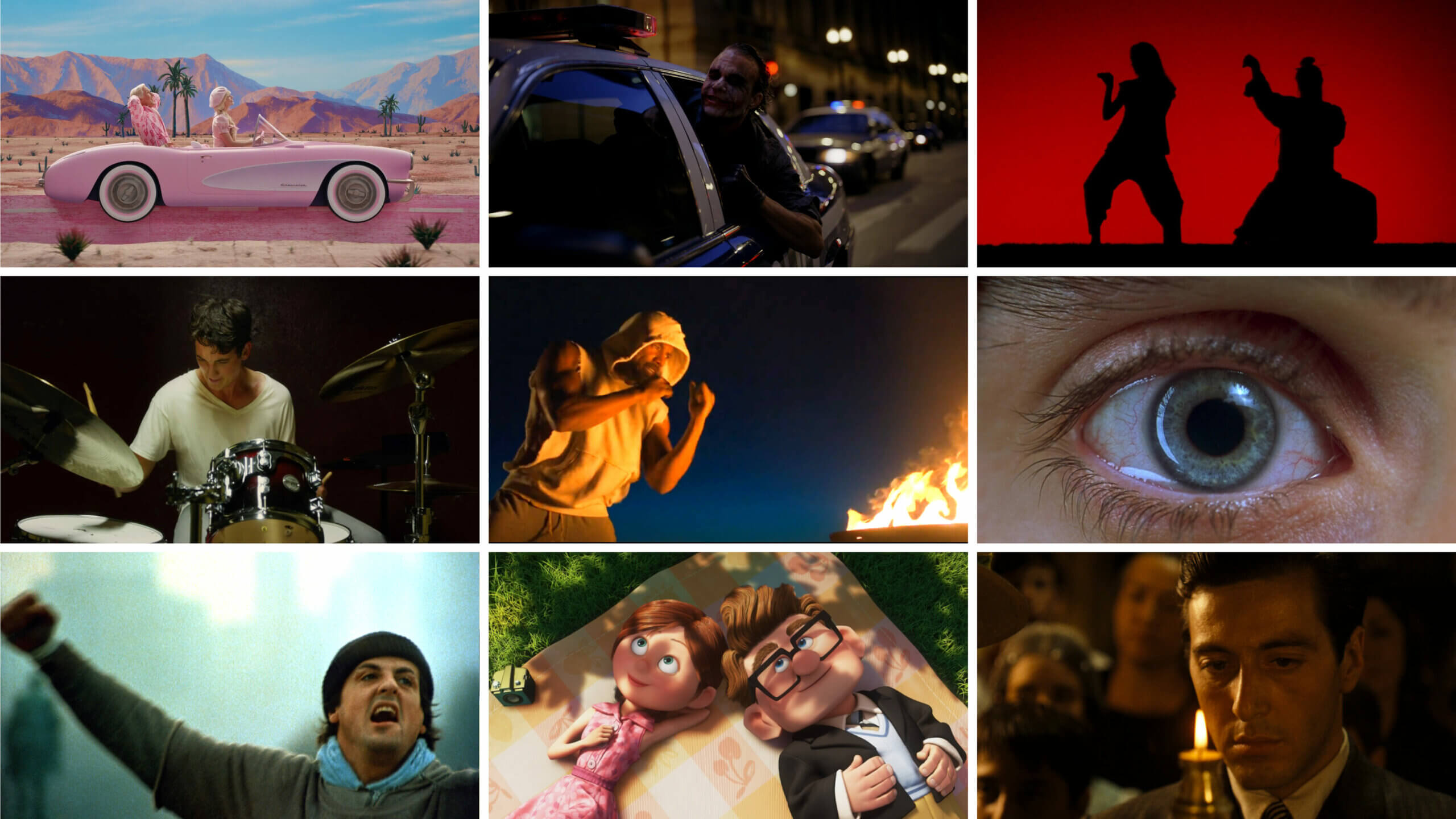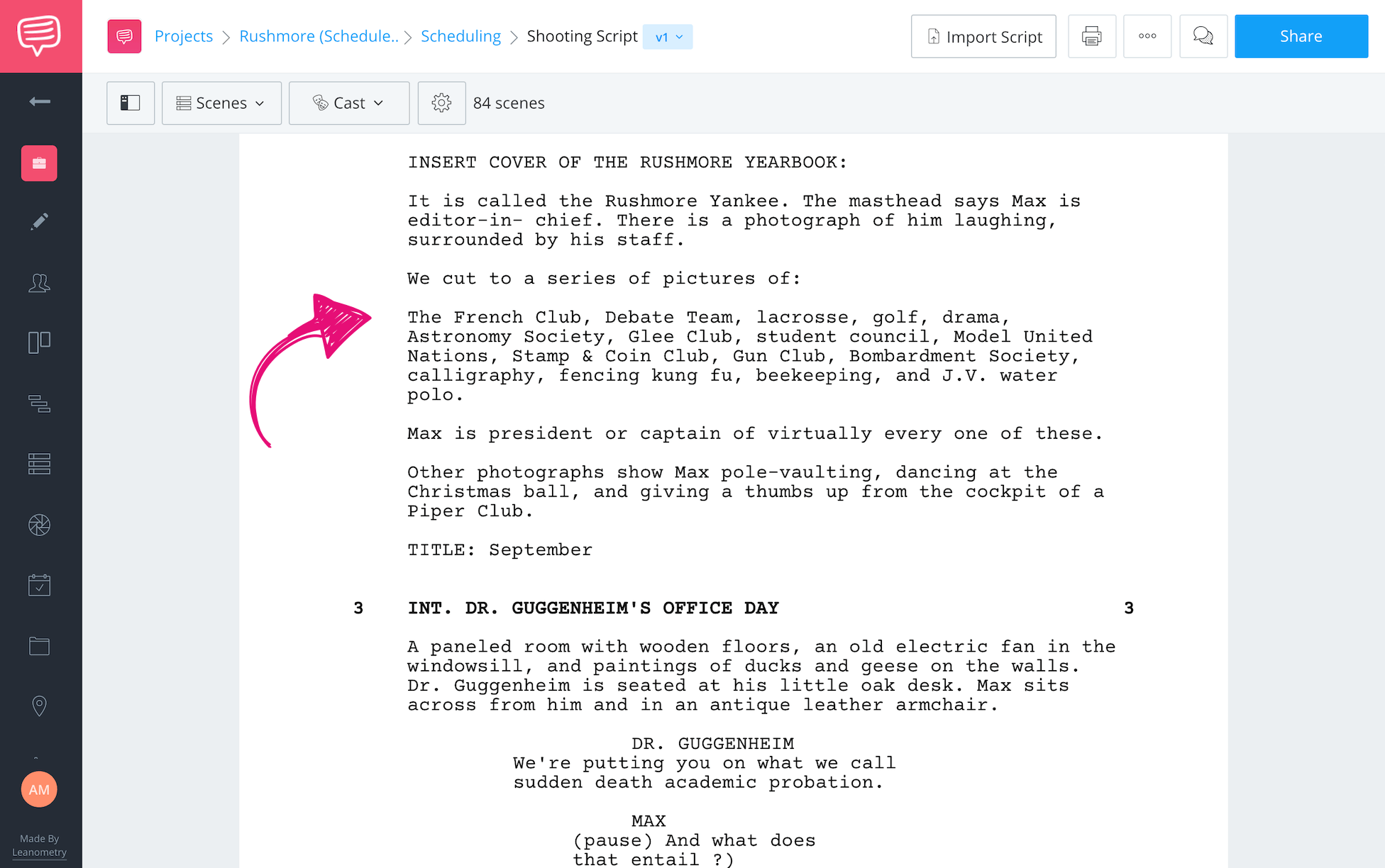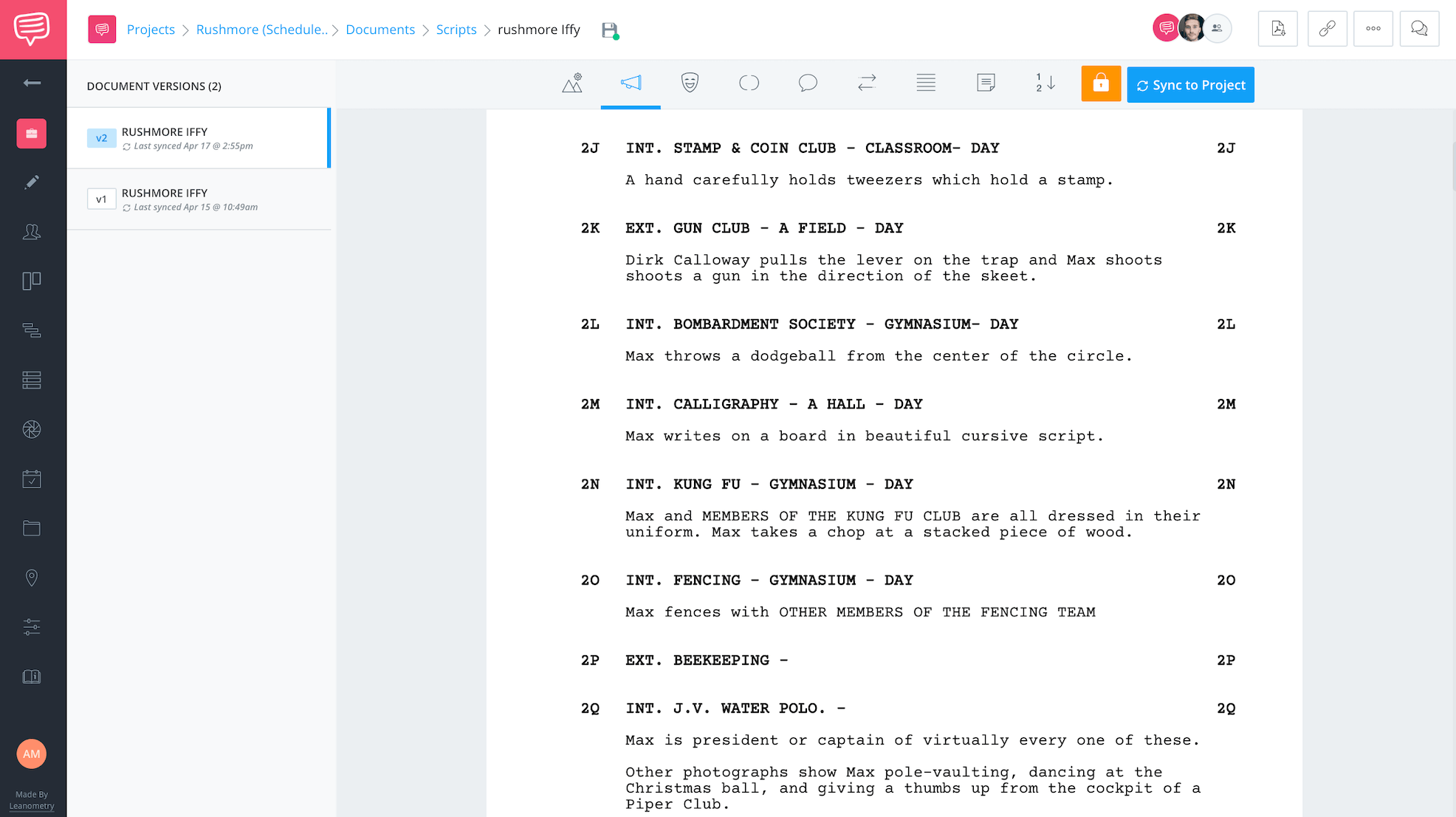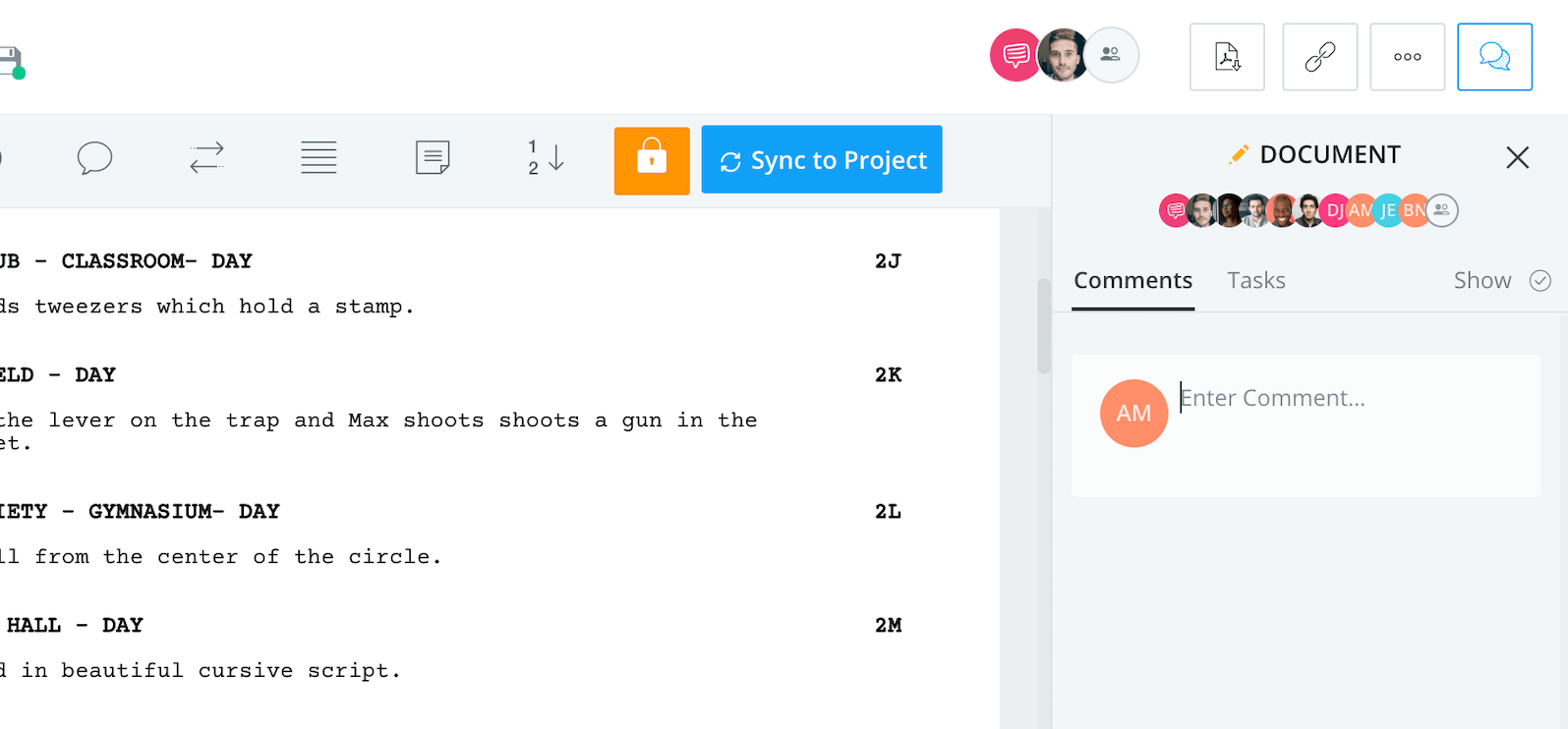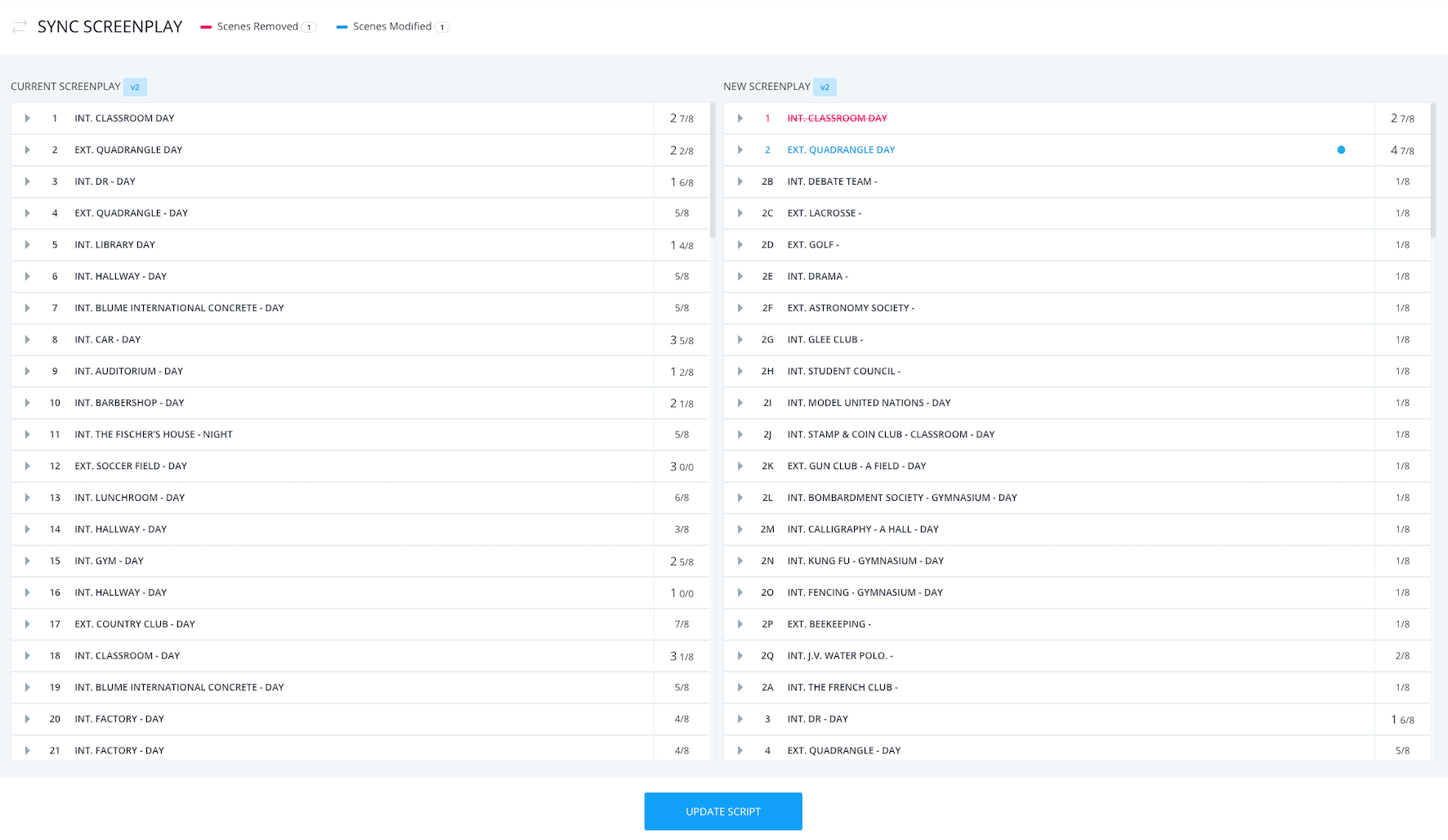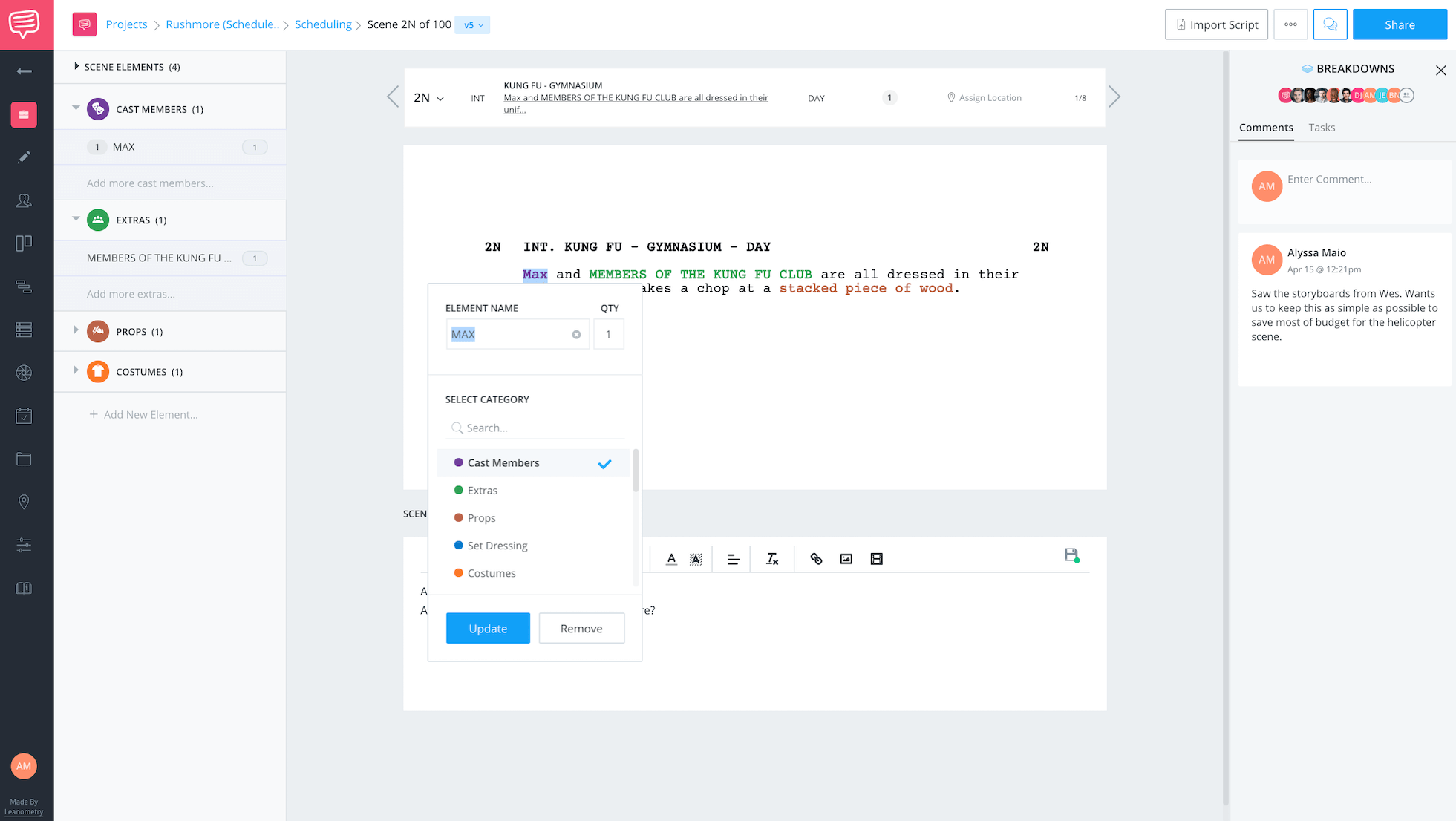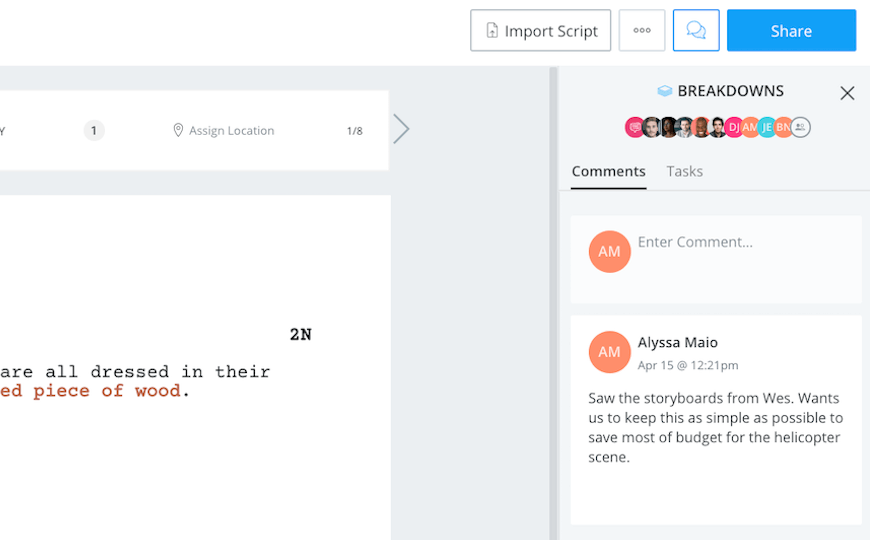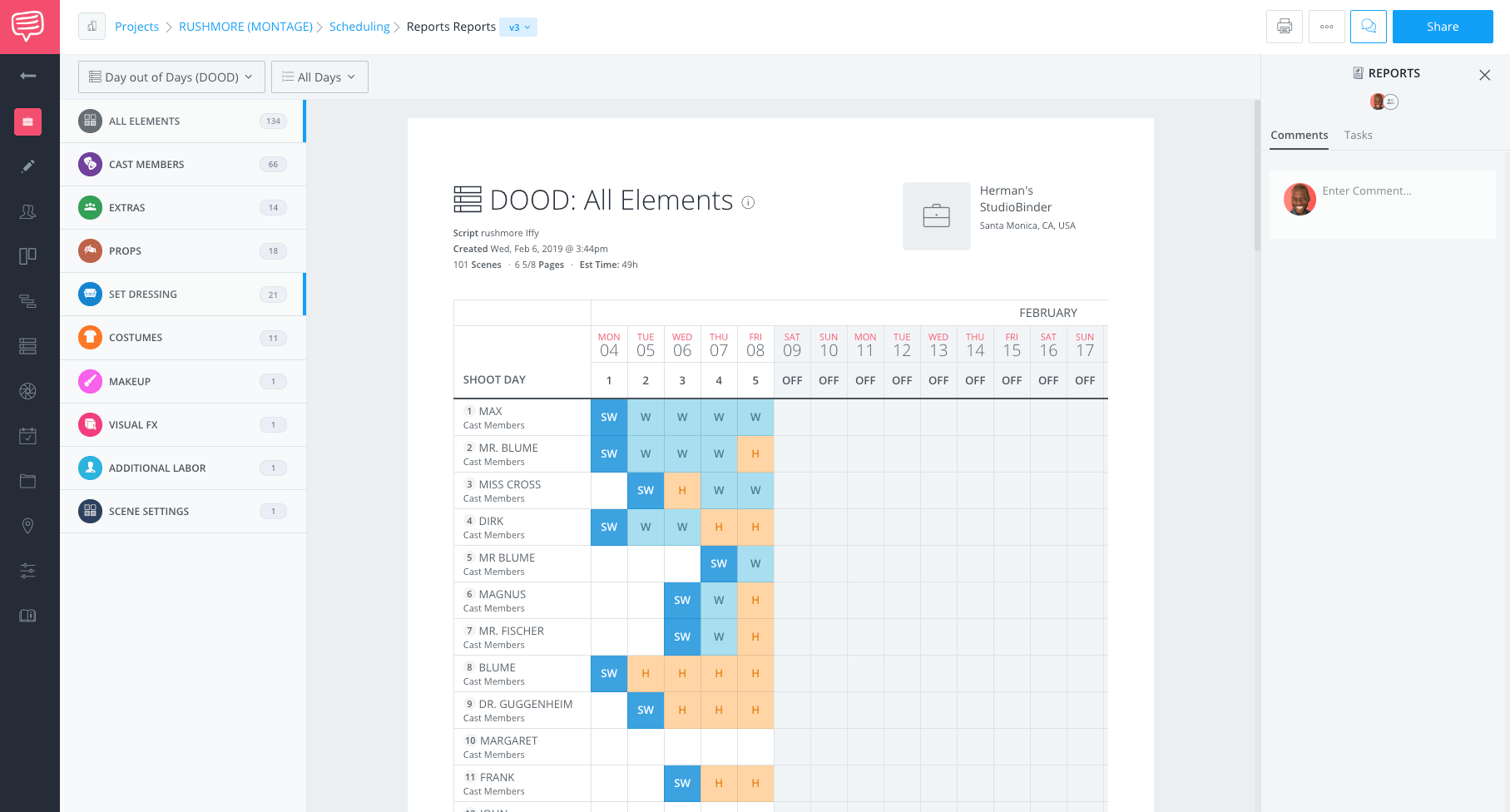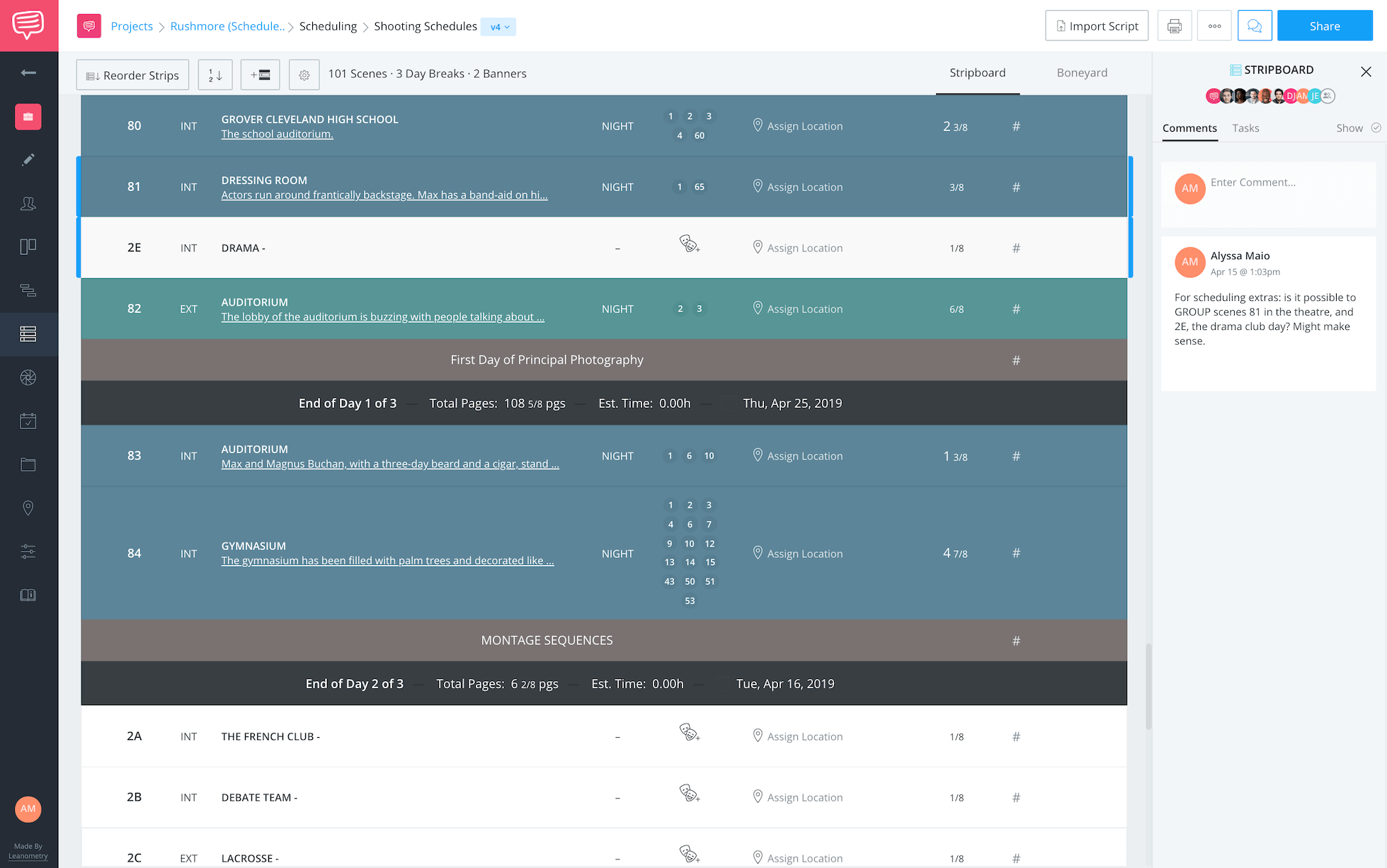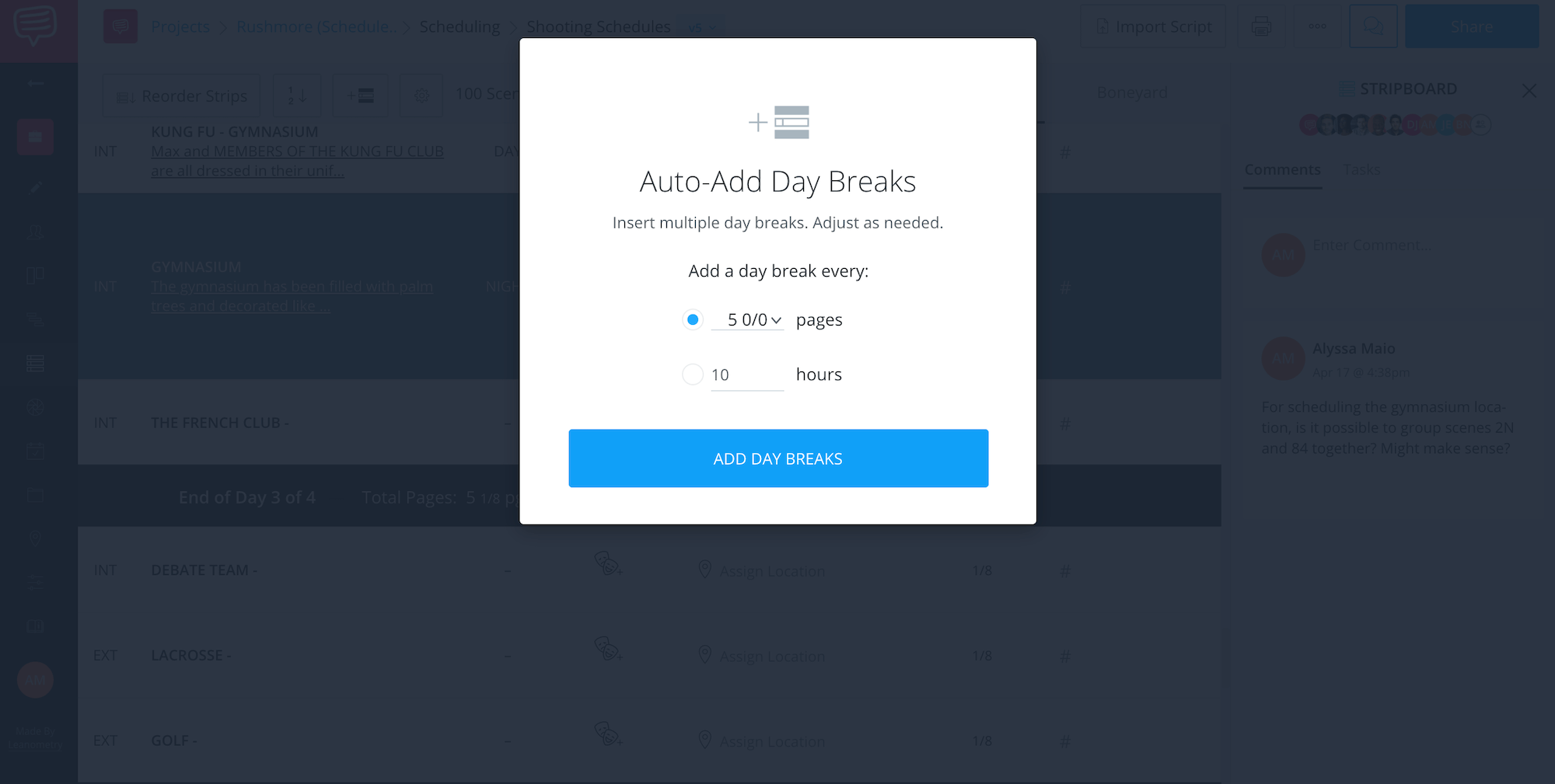Amovie montage can accomplish many things, from interweaving multiple storylines to delivering jokes. But accounting for a montage in your production schedule is no laughing matter. What can be summed up in two or three lines in a script, translates to many more minutes on screen.
So how does the savvy producer or 1st AD go about making heads or tails of scheduling a montage? We’ll examine a montage scene, and see how to format it in such a way that the new version lends itself to the shooting schedule nearly perfectly. And we’ll do it all in StudioBinder! Let’s jump in.
FILM AND VIDEO MONTAGE
1. The value of a great montage
Scheduling a montage may be overwhelming – maybe to the point of us questioning if the scene is even necessary.
There is still a real added benefit to montages.
And most of the time, the headache is worth it.
As a producer or first AD, you are probably aware of these advantages, but if you're here, there's also a chance you might want to be reminded of them.
MONTAGE Benefits
What can a montage do?
A montage is capable of condensing time, space, and important information in a creative, memorable way.
What can a montage do?
- Compress time
- Provide comedy
- Intertwine story lines
- Gestalt (an organized whole that’s greater than its individual parts)
Production logistics are not always on the screenwriter's mind as they craft their screenplay and writing a montage scenes.
But the choices they make are (usually) for a good reason.
This brief section provides some motivation for sticking to the script.
For keeping that montage.
Even if scheduling that montage drives you a little crazy.
Before we get to scheduling, let's take a look at some movies where the montages themselves define the film, or in some cases, that entire genre.
Let's start with this montage example from Cinema Paradiso, where we literally are watching the main character watch a montage on screen.
To provide some quick context, the film explores a man's love affair with the movies, and those important friendships that lead him there. Let's watch:
One of the best montage sequences comes from Cinema Paradiso
The film plays out like an emotional love letter to cinema.
The effect this montage has on our main character enriches the story of the entire film. We watch him cry, and we realize just how affected he is by what he's watching. This montage matters to him.
The love and kissing in the montage scene translates to the love between characters, even if most of them are no longer in the protagonist's life.
This love transcends life and death.
Most of the film carries this nostalgia, as it is primarily told in flashbacks of our character's childhood.
So by the time we see this beautiful culmination of love, of life, with our now older, and deeply affected protagonist, we feel it with him.
The montage matches the film's nostalgic tone, and we too, experience the magic of the movies.
That is the power of cinema, and the necessity for it–something, director Giuseppe Tornatore wanted to preserve. And he shows this through our main character's reaction to a montage.
Where would this movie be without it?
Other montages, define entire genres.
A great example is the Rocky franchise.
Montages are used so frequently in Rocky Movies that there are a million articles just ranking them.
While the very first training montage in Rocky, may not be the best one in the franchise, it does lay the foundation for every other montage to follow.
The montage serves a very important purpose in a franchise built on an underdog's determination.
In the first montage, we see Rocky's desire, how hard he is willing to train, and what he is willing to do to win, revealing some character context as he relentlessly pursues his goal.
With of course that infamous song we know and...love?
Montages can build franchises
If we're sick of "Eye of the Tiger", it's because we've heard it a hundred times, and now it is impossible to hear that song and not think of Rocky.
That's the power of this technique.
But this first Rocky montage didn't just lay the foundation for the film's sequels...
It inspired many similar films that followed...
From Jean-Claude Van Damme's training montage in Bloodsport...
Training to fight montages
...to Mark Wahlberg in the more recent 2010 hit, The Fighter, we see both men in montages highlighting what they're willing to do to achieve success.
Both montages reveal more context about each character, pushing the plot further along.
The Fighter workout montage
I think it's fair to say that some montages are worth it.
Sometimes they can make the difference between a good story, and a truly memorable one that stands the test of time.
Sure, montages demand multiple locations.
Yes, they may add shooting days.
Yes, they will eat into the budget.
But sometimes montages define a film.
So how exactly do you schedule it?
It may not be as straight-forward as you may think.
For the producer, or first assistant director, committing to making a montage will boil down to what the budget allows.
And that means you must schedule a montage sequence efficiently in order to keep your costs in check.
But don't worry, StudioBinder is here to help.
In the next section, weʼll take a look at a montage from one of the best Wes Andersonʼs movies Rushmore to demonstrate how scheduling a montage really starts...
...with the script.
Montage from page to screen
2. Format your screenplay
Before we can schedule anything, it's necessary for us to look at a scripted montage. As previously mentioned, many writers craft montages without thinking of the logistics.
As a producer or first AD, I'm sure you know this all too well.
But with StudioBinder screenwriting software, we can easily, and appropriately, format each montage as a clear scene to shoot.
I want to use Wes Anderson's Rushmore as an example because Anderson loves the montage that it became a part of his filmmaking style. From his grandsons wreaking havoc in The Royal Tenenbaums to the “letters” scene in Moonrise Kingdom, Anderson may have single-handedly kept the montage alive.
Let's take a look at the montage and see how the scene unfolds on screen.
Then, we will see how it was originally scripted.
Rushmore’s montage is cinematic gold.
In this montage, we see multiple locations, with multiple wardrobe changes. In other shots, we even see different talent.
Every one of these shots is a scene all its own, with its own elements.
Of course when I say "elements," I am referring to what makes up the scene:
Actors, props, costumes, locations, set dressings, etc.
Every single quirky element that Anderson is famous for has to be scheduled and budgeted.
One of these scenes might only be one or two lines on the page, but could potentially require one hour of prep and one hour of shooting.
We need to account for that.
How do we do that?
First, let's take a look at the Rushmore montage as originally scripted:
Notice that the various clubs are just listed as action lines. As filmmakers, we know how much goes into each shot. So what do we do?
The best way is to break down each action line, or in this case, each club, as a separate scene.
StudioBinderʼs Screenwriting Software will automatically create a new alphanumeric scene number for you when you create a scene, such as Scene 2A, 2B, 2C, etc.
These scene numbers will eventually become their own scene strips to be arranged on the stripboard (weʼll cover that in a bit).
The reason the scene numbers are appended with letters is to keep the scene numbers that follow, the same. Once a script is locked, you want to keep your scene numbers undisturbed as much as possible to keep your pre-production references consistent.
Okay, now that each club in Rushmore is its own scene, youʼll want to elaborate the action lines with key descriptions.
Why?
So when youʼre breaking down the scene out of context, you can identify the elements and prep-time needed to shoot the scene.
If you're unsure what description to add in, you can always use the comment box to collaborate with your team in real time.
But what is perhaps the most innovative feature is the ability to sync this new updated script with the rest of your project.
Once you make your changes in the script, and hit that sync button, these new scene headings automatically get populated as brand new scenes into your shooting schedule and shooting script.
Now that you have your new scenes, they're ready to be broken down.
RELATED POSTS
HOW TO MAKE A MONTAGE
3. Break down the montage scene
I'm sure you already know how to break down a script, but script breakdowns identify the key elements in a scene in order to schedule properly.
As mentioned previously, script breakdown “elements” are really anything you need to accomplish a scene; props, wardrobe, set dressing, VFX, etc.
But the two elements that have the biggest influence on your schedule are:
2. Cast Availability
Most of the time, youʼll want to schedule by these two criteria.
And the breakdown is where you define them (along with all the other key elements that could affect the prep time for a scene).
StudioBinder's script breakdown feature makes identifying key elements a cinch with its industry standard script breakdown colors method. Watch below:
StudioBinder Script Breakdown
You can pick which scene you want to breakdown in the drop down menu, and then start tagging the most important elements.
Because breakdowns are made for scheduling purposes, starting with who is in the scene is probably best.
Highlight each element and assign the appropriate color tag.
Also, feel free to assign tasks in your task board, make comments, and add notes in the software. Make use of the collaboration features — you need them.
In the case of Rushmore, obviously Max Fischer is the main element, the star of the movie. He’s in virtually every scene with few exceptions.
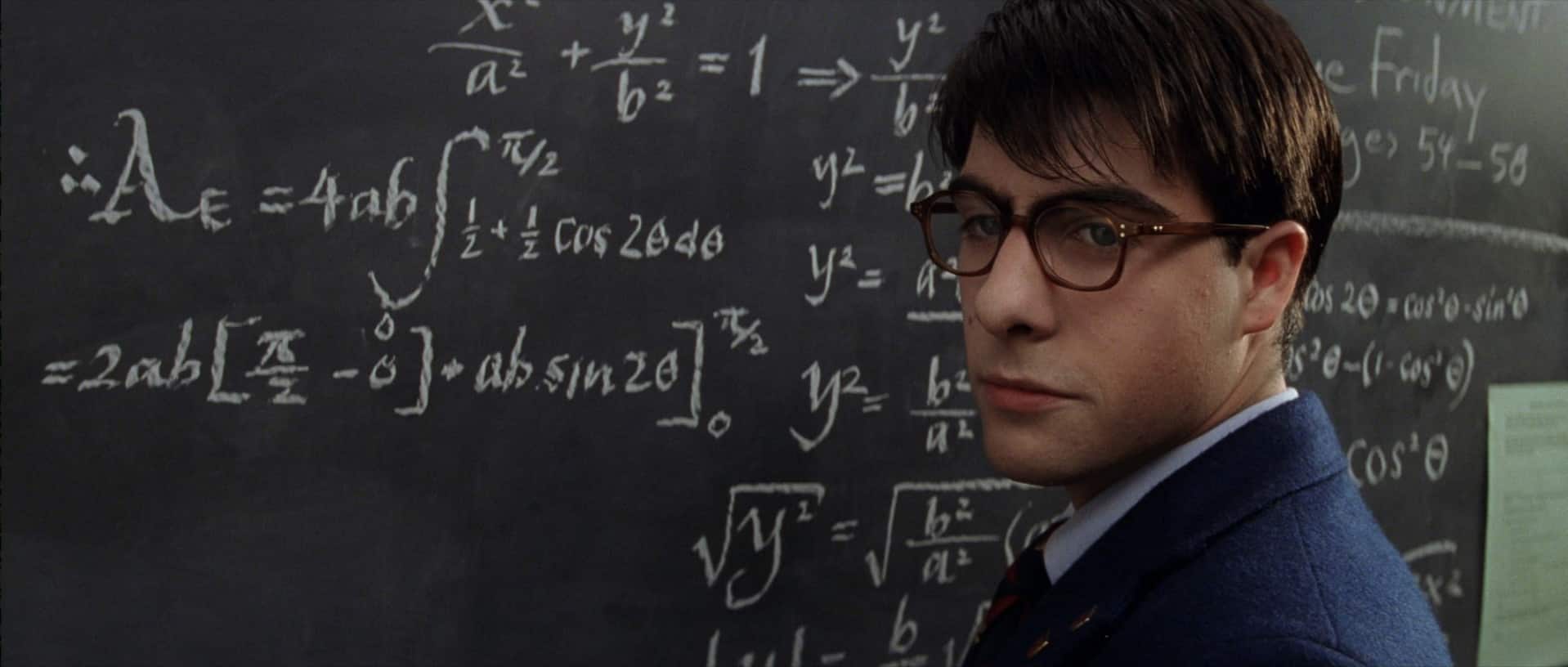
Max Fischer is our main montage element
Every cast member, no matter the role will want some info ahead of time, regarding their schedule. StudioBinder organizes all of this info in a standard "DOOD" report.
THE DOOD REPORT
Run a DOOD (day-out-of-days) report for your stars and talent. This will give you the best sense of how much you are asking of them. This is particularly wise when working with younger talent, as was the case with Rushmore.Dood Definition
What is a DOOD?
A Day Out Of Days (DOOD) report is the listed days that cast and crew will have their work classified either as travel, start work, hold, or finish work.
What does a DOOD do?
- Tells talent when their work begins and ends
- Informs producers how much they’re paying, and for what
- Lets every department know what’s shooting, and when
The DOOD is definitely a producer’s best friend. Every actor who’s ever been on set will request one on day one.
What's up DOOD?
Now, that you’ve got a clear picture of what your most important elements are, congratulations — you can properly start scheduling your montage.
RELATED POSTS
Montage Production Schedule
4. Make your shooting schedule
Now that you've assigned cast members to specific scenes, and identified the other key components needed in each scene, we can finally schedule shoot days.
How will we do that?
Well, if you haven't noticed yet, StudioBinder scene scheduling software literally executes on every part of the pre-production process, so we might as well keep using it.
StudioBinder scene scheduling automatically populates your new scenes into strips on a stripboard with all of the script breakdown info saved in each strip. Learn more in the video below:
As a director, you are probably well versed in stripboards. But just in case you haven't used them in awhile, stripboards in film refer to color-coded strips that have a scene's info on them. These strips are arranged (and re-arranged) for the purpose of scheduling.
The capabilities of antiquated systems like movie magic, pale in comparison to StudioBinder's. The strips in StudioBinder can be dragged and dropped in any order that suits you and your budget best.
If you missed anything in the breakdown, you can also edit the elements of the scene right on the strips.
You can assign location and cast directly onto the strips, and move them around accordingly.
Our recommendation is to schedule by location first, followed by cast availability. Shooting all of the scenes that take place in a certain location is often the most efficient.
You can even assign day breaks. StudioBinder also has an auto day break feature based on the amount of pages you plan to shoot in a day, or the amount hours you plan to spend.
Strips are automatically color coded to industry standards, so if you're sharing with above the line crew, you don't need to worry about coloring them yourself if you're unsure.
Going from the screenplay to the production schedule has never been easier. StudioBinder streamlines the entire process and houses it in one user-friendly place.
The next time you're working with a montage, or any difficult script, just upload it to StudioBinder, take control of the software's features and let it do its job.
Related Posts
UP NEXT
Schedule "Hidden" Shoot Locations
Like any muscle, the more you use your scheduling chops, the easier it becomes. Now that you are more familiar with StudioBinder as one stop shop, make use of it for trickier situations. Like in montages, some script elements could be accidentally overlooked and affect your shooting schedule, but that can be especially damaging when those elements are locations.
Scripts can have a ton of these "hidden" locations. Being able to identify what a "hidden" location looks like on the page, will be vital in scheduling your project. Take a look at our next article, and add another scheduling skill to your arsenal.
